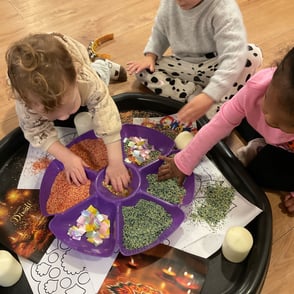Communication is an essential skill and an important part of our everyday lives. Being able to effectively communicate allows people to express their wants, needs and thoughts, as well as understand those of others.
How can we communicate with those who struggle with communication though, as a result of disabilities, learning difficulties or simply age? Makaton is a unique language made from signs and symbols that is designed to be used as a visual aid for speech, that parents can use to better engage with their children and overcome communication challenges. So far, it has helped to empower over 100,000 children and adults to better express themselves.
Research has shown that children develop an understanding for the world around them before they are able to speak and interact with it verbally. This can lead to frustration and temper tantrums. However, when parents and teachers introduce children to Makaton, it can encourage language development, and assist children to gather their thoughts. Today we will cover our top tips and advice for parents who would like to begin using Makaton, to better understand their children.
Our Top Tips on How to Learn Makaton
1. Be as Expressive as Possible
Nonverbal communication makes up a significant amount of our interactions. With one look or a change in posture, we can understand how another person may be feeling. Furrowed brows and pouted lips suggest someone is angry, however a big smile and raised eyebrows show us that another person is happy. When using Makaton, take full advantage of nonverbal communication to add additional cues that will help your child to better understand the context of signs.
In addition, pointing to objects or images of objects when you refer to them will help develop additional associations with signs and assist learners. The more you mime, the better!
2. Focus on the Keywords
Keep it simple, especially when children are new to Makaton. As their confidence and skills grow, they will be able to sing along to nursery rhymes and convey increasingly more difficult concepts. However, to develop strong foundations, select only the most important words to sign and keep sentences short and clear. Words that cover immediate needs, such as “eat” and “drink” should be covered first, and then built up to words that cover emotions and concepts such as time.
3. Sign Everywhere, Always
Try to use Makaton as frequently as possible, to ensure that it becomes an ingrained part of everyday communications. Only when it is used habitually, will children begin to use it as a way to interact with parents and others. Just as words require repetition and rehearsal, signs need to be introduced and re-introduced over and over for best results. Therefore, use it whenever you can as a parent, as the more comfortable you get signing, the better the chances of your child becoming comfortable too.
4. Offer Encouragement and Don’t Give Up
Trying new things can be challenging for both parents and children, so be sure to reward yourselves for all of your hard work! When your child gets a sign right, or learns a new one, cheer them on and express how proud you are. We recommend offering lot’s or praise for positive reinforcement!
5. Have Fun With It
Finally, the most important part of learning Makaton is that you have fun. Play games, join clubs where you can meet with other learners or watch TV shows such as Mr Tumble on CBeebies. If there are activities that your child enjoys, can you make them Makaton friendly? For example, take one of their favourite bedtime stories and read it together using all of the signs that you know. We hope you have a great time!
We have compiled the 75 most common Makaton phrases that you need to know, into a useful learning resource that has both English and Chinese translations. See our video tutorial here!
Tags:
Parenting Tips
08-Jul-2021 12:44:22
Related Articles




Write a Comment